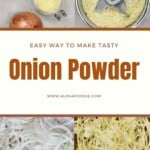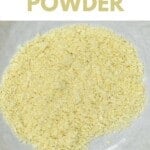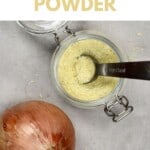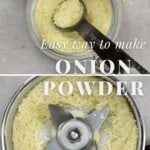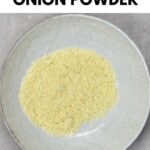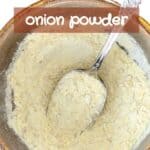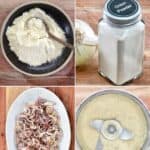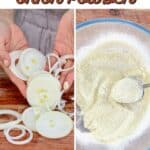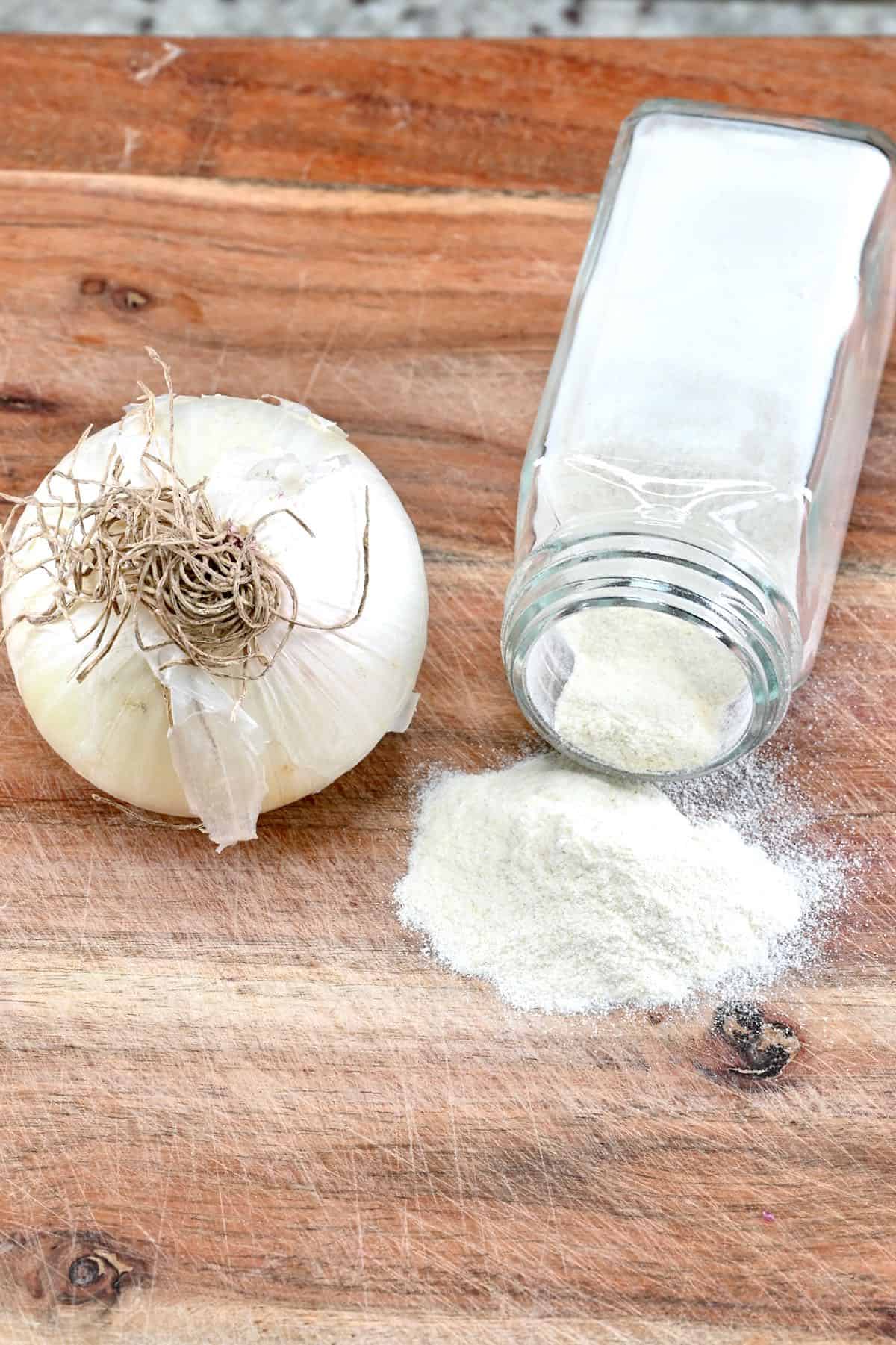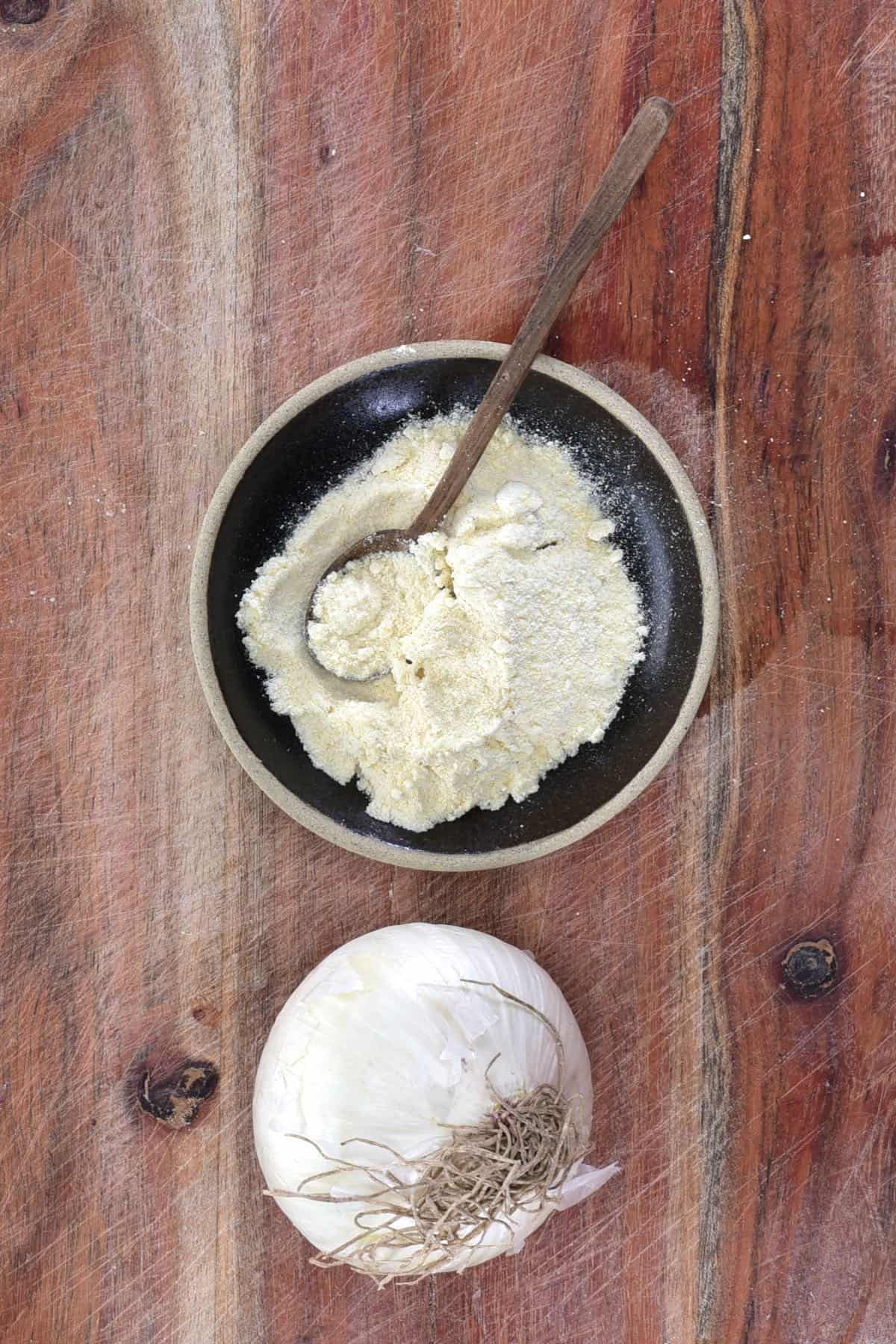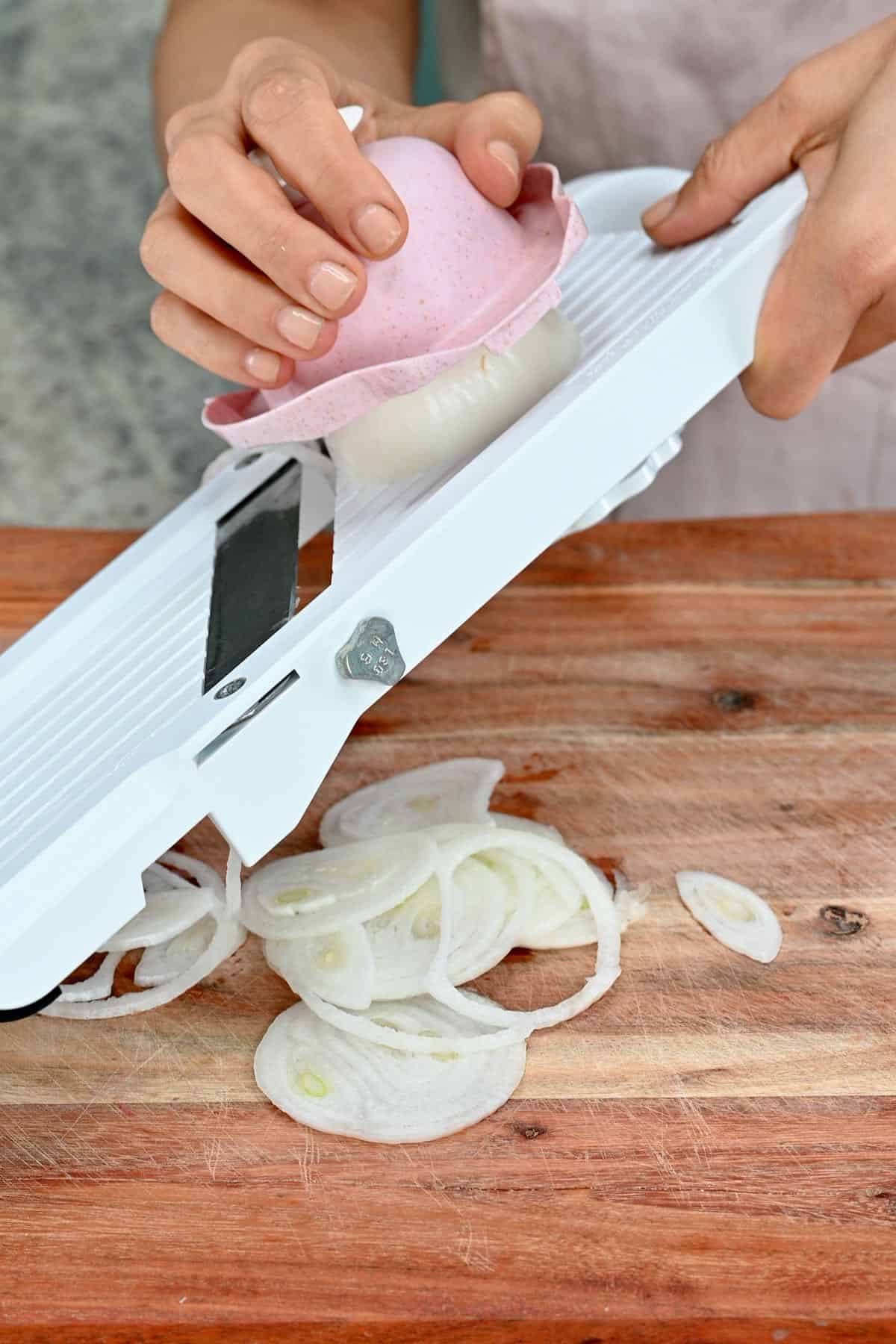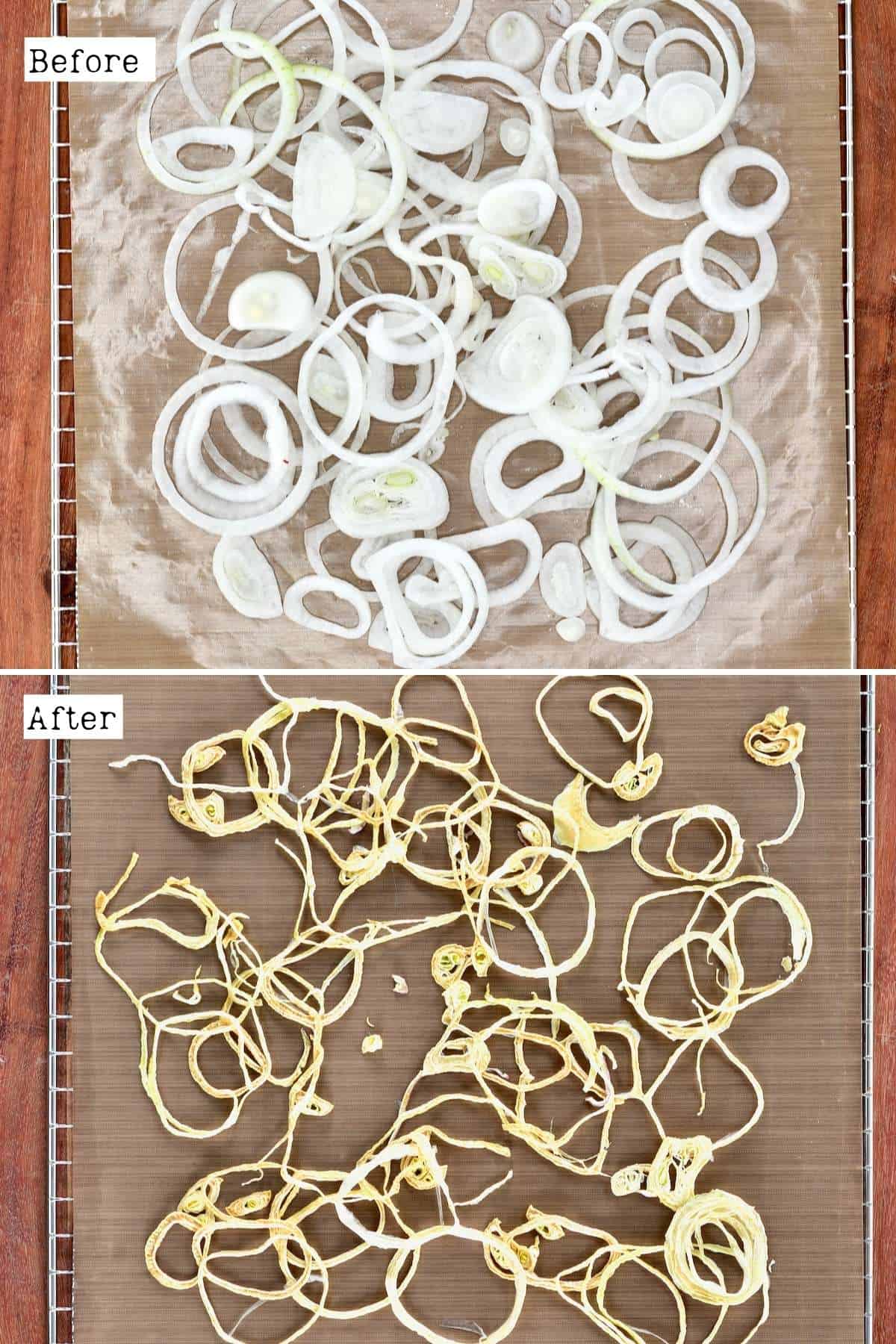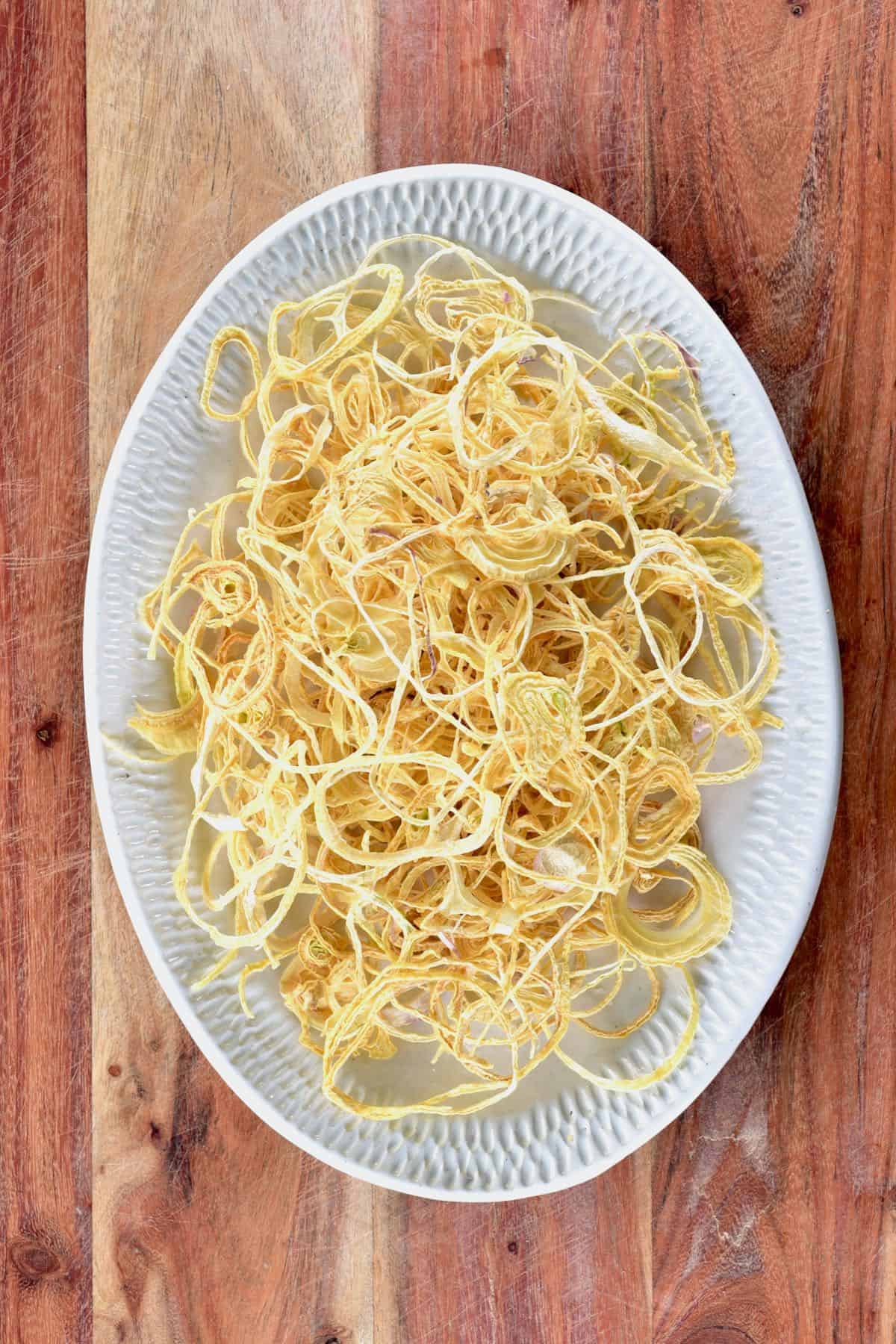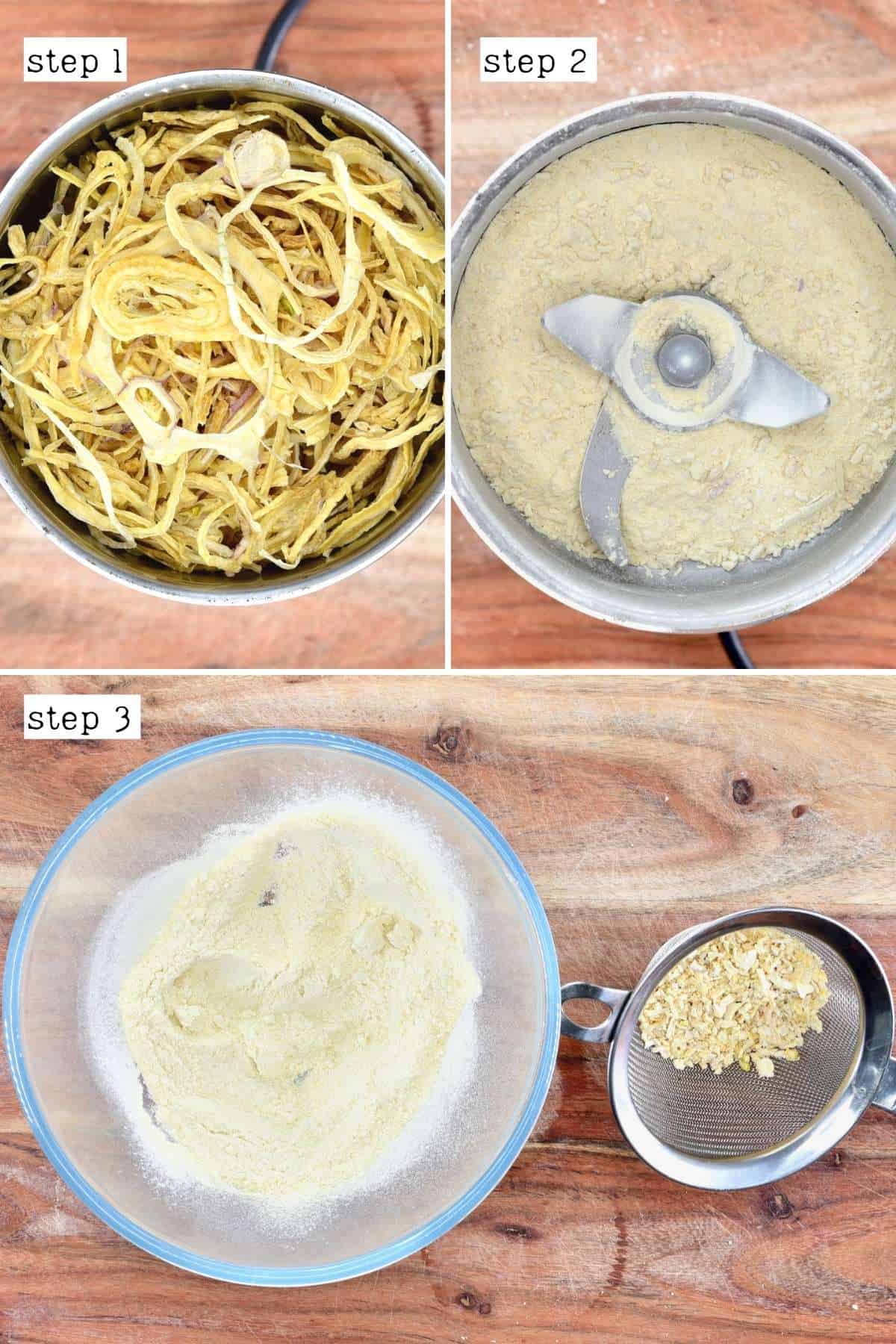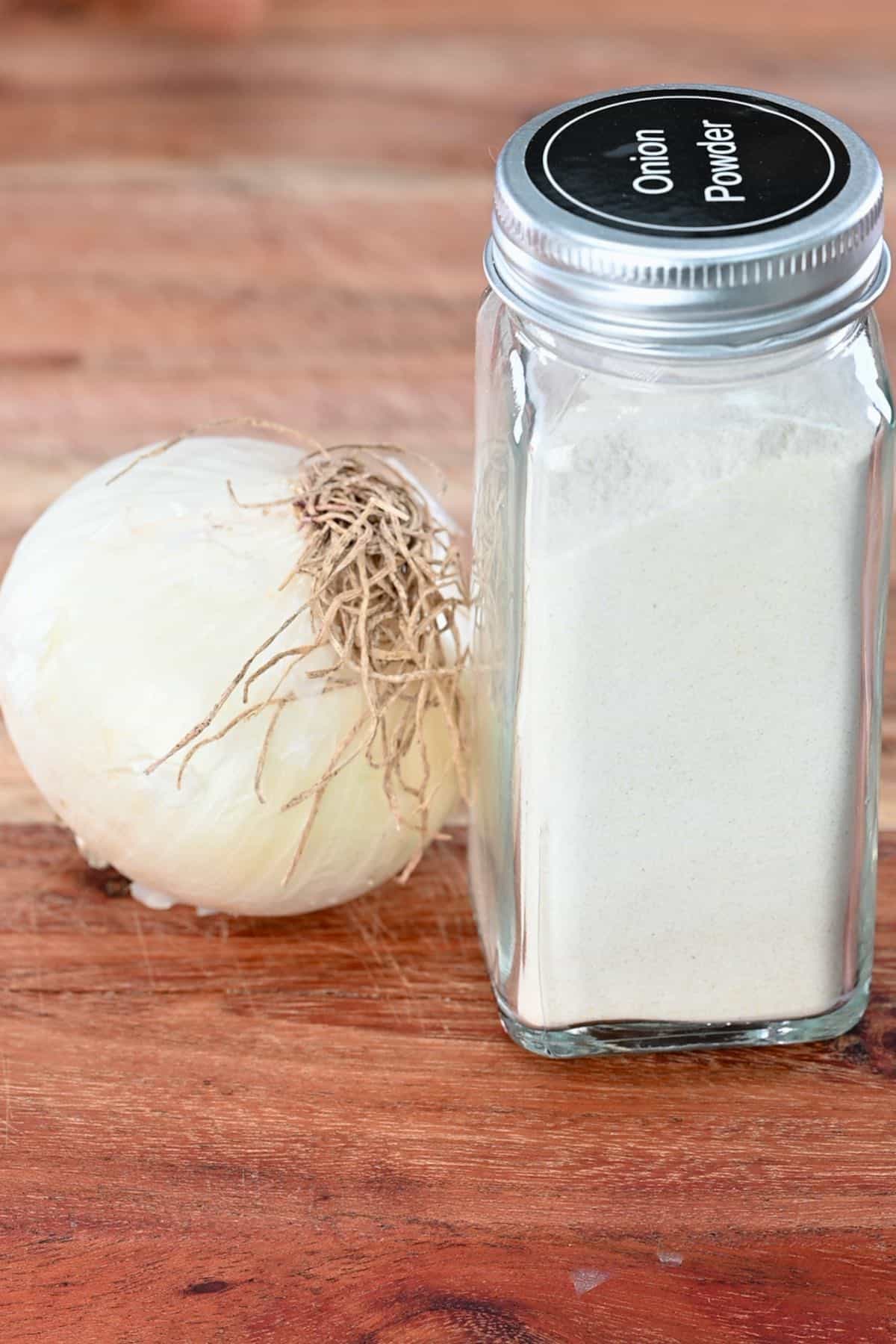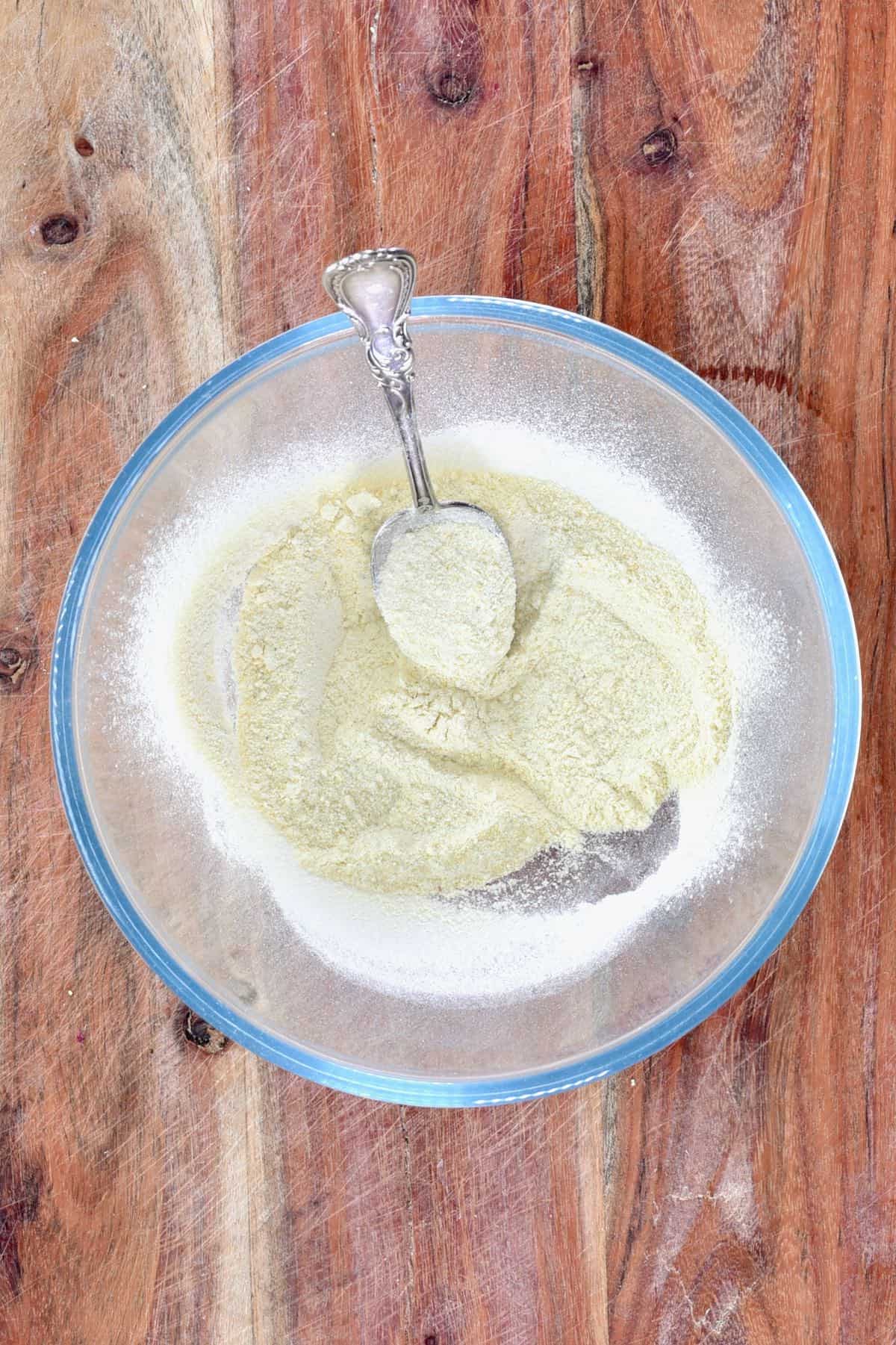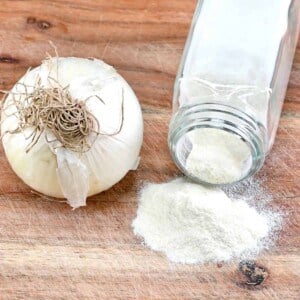I have already posted DIYs for dehydrating recipes including homemade onion flakes, and homemade garlic flakes & homemade garlic powder. Onion powder is one of my all-time favorite low-effort food seasonings for those days when I don’t want to deal with chopping onions. Not to mention that it’s also tear-free, and homemade versions will avoid any nasty additives that can be found in store-bought options. Moreso, onion powder is a great way to preserve large amounts of homegrown (or store-bought) onions, plus the powder is more cost-effective, tastier, and contains no preservatives, fillers, or anti-caking agents!
How to make onion powder
Step 2: Dehydrate the Onion: Choose your method between using a dehydrator, using the oven, or air-drying, and follow the steps below. Chef’s Tip: For dried minced onion you can use a food processor/chopper for just a few seconds or using a mandoline and then finely mince with a knife. For more tips on how to peel and slice onions, check my step-by-step guide on how to cut an onion.
How to store
The onion powder can be stored in an airtight spice jar in a cool, dry location – like a kitchen cupboard. When stored properly, this powder can be kept indefinitely, though the flavor will begin to decrease after around a year. Dehydrate at 150ºF/66ºC for 6-8 hours (if high humidity, around 80%) or 4-6 hours (if low humidity) until completely dry. They are ready when they snap when trying to bend. If they’re at all pliable, they need more time. If your oven doesn’t go as low as that, then choose the lowest temperature and prop open the door with the handle of a wooden spoon or something similar to allow for better airflow and for the steam to escape as the onion dehydrates. Check on the onion hourly, optionally flipping it over a couple of times to dry it faster. Remove from the oven when it snaps rather than bends, or at least has a very little bend (as it should continue to crisp while cooling). Once cool, it should snap rather than bend. If not, then it’ll have to go back into the oven again. This option is best for warmer, non-humid climates with lots of sunshine. Colder and more humid areas will affect the drying time. Flip the onion pieces a few times to speed up the process. This method can take a few days based on the onion’s thickness, weather, and humidity. Once ground, sift the fine powder through a sieve and re-grind any leftover larger bits. The onion powder is ready. Give the jars a shake the first few days after dehydration, to break up any errant clumps, and optionally place some uncooked rice or beans in the jar to absorb any extra moisture, to avoid clumping.
How to use
Here are just a few ways that I enjoy using the dehydrated onion powder.
In any recipe that calls for fresh onion. In or over bread and other savory baked goods – like bagels, buns, or bread. Like this Simple Homemade Multigrain Bread Recipe. Or even pizza crusts like this traditional neapolitan pizza, butternut squash pizza, or cauliflower mini pizzas. Add to soups & stews – like this Japanese-inspired Ramen Noodle Soup or turmeric ginger pumpkin soup. For black bean burgers, falafel burgers, and vegan meatballs .
Within seasoning, herb, and spice blends – like everything bagel seasoning, Simple Homemade Italian Seasoning, or Simple Mexican Seasoning (Mexican Spice Blend). In batter for frying – works amazingly alongside paprika and garlic powder. To season veggies and proteins – including Crispy oven Baked Fries and Roasted Purple Potatoes. For other potato dishes – like mashed potato and baked potatoes or even homemade sour cream and onion flavor chips!
Recipe notes
How much onion powder equals one onion? 1 tablespoon of onion powder is equal to one medium onion or around 1/2 cup chopped raw onion or 1/4 cup minced onion. Onion powder vs onion salt? Onion salt is a mixture of onion powder and salt. Use a ratio of 3:1 parts salt vs onion powder (e.g. 3 tsp salt to 1 tsp onion powder). If you use a food processor to grind the onion into powder, allow it to settle for a minute or two before opening it, otherwise, the powder tends to go everywhere! You can use the onions of your choice, though they will all affect the flavor in different ways. If you’re using homegrown onions, you can also dry the green leaves but the time to dry the leaves vs. bulb will differ.
Related DIY
How to Make Fried Onions (Crispy Onions/Birista) Simple Roasted Onions How to Make Beetroot Chips (Baked or Dehydrated) Simple Golden Spice (Golden Milk Powder) How To Make Garlic Powder How To Make Garlic Flakes How to make Onion Flakes How to Make Ginger Powder (Two Methods) How To Make Crispy Ginger Chips How to make Turmeric powder at home How to Use Ginger in 40+ Ways (Chop, Prepare, and Use Ginger)
If you try this onion powder DIY, then let me know your thoughts and questions in the comments. I’d also really appreciate a DIY rating and would love to see your recreations – just tag @AlphaFoodie.
